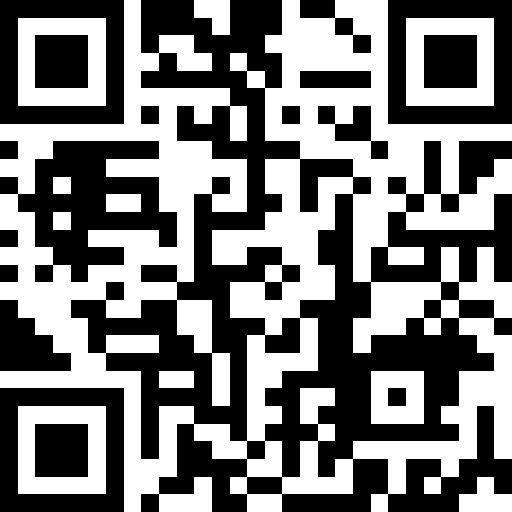Title Page
-
Conducted on
-
Prepared by
-
Location
-
Student Name
Observation
-
This Observation Report Form is used by work based tutors to document and evaluate the knowledge, skills, and behaviors (KSBs) demonstrated by the learner during an observed activity. The work based tutor will record detailed evidence of the learner's performance, aligning with the required standards. Where applicable, photographic evidence will be captured to support the assessment of KSBs. Additionally, a witness testimony is required to confirm the learner's competence in the KSBs demonstrated during the observation. This ensures a comprehensive and robust assessment process.
-
General Comments
-
Health & Safety
- K1: Awareness of Health and safety legislations, codes of practice and safe working practices, relevant to the occupation and the operative’s responsibilities. Including Health and Safety at Work Act, BS 7671, BS EN 50131, BS EN 62676 and BS 5839.
- K5: Principles of security and fire risk assessments: function, content and how to implement them.
- K9: Environmental legislation: impact on fire and security systems processes and technologies.
- S1: Comply with safety legislation, codes of practice, risk assessments, method statements, safe systems of work and apply control measures.
- S6: Comply with environmental and sustainability, regulations and standards.
- S8: Carries out risk assessments.
- B1: Puts workplace health, safety and wellbeing first for self and others.
-
Electrical Principles
- K1: Awareness of Health and safety legislations, codes of practice and safe working practices, relevant to the occupation and the operative’s responsibilities. Including Health and Safety at Work Act, BS 7671, BS EN 50131, BS EN 62676 and BS 5839.
- K2: Testing techniques for electrical and electronic components used in fire detection and alarm systems. The principles of using meters, applying Ohms law, formulae, calculations and taking readings.
- K4: Principles and techniques for maintaining fire detection and alarm systems and their components using tests, diagnostics, taking readings and recording information.
- K6: Principles and techniques for maintaining intrusion alarm, access control, video surveillance (CCTV) and their components using tests, diagnostics, taking readings and recording information.
- K12: Principles and techniques for installing and maintaining electronic systems: SI units, quantities, formulae and calculations, electromagnetism and electromagnetic induction, ICT applications, smart Apps and power supplies.
- K15: Testing techniques for electrical and electronic components used in intrusion alarms, access control systems and video surveillance systems (CCTV). The principles of using meters, applying Ohms Law, formulae, calculations and taking readings.
- S1: Comply with safety legislation, codes of practice, risk assessments, method statements, safe systems of work and apply control measures.
- S4: Carry out takeover procedure, diagnose and repair faults.
- S7: Complete functionality tests of systems and components during handover of systems.
- S13: Carry out maintenance activities on fire detection and alarm systems and their components.
- S14: Carry out maintenance activities on intrusion alarm, access control, video surveillance (CCTV) and their components.
- B1: Puts workplace health, safety and wellbeing first for self and others.
-
Customer Service
- K1: Awareness of Health and safety legislations, codes of practice and safe working practices, relevant to the occupation and the operative’s responsibilities. Including Health and Safety at Work Act, BS 7671, BS EN 50131, BS EN 62676 and BS 5839.
- K10: Principles of customer service: technicians' responsibilities, impact on brand, professional image and commercial risks.
- K11: Verbal communication techniques. Giving and receiving information. Adapting style to audience. Barriers in communication and how to overcome them. Sector specific terminology.
- K13: Written communication techniques: paper based and digital. Plain English principles. Sector specific terminology.
- K16: Collaboration working techniques with internal and external stakeholders.
- K20: Equity, diversity and inclusion legislation and its impact in the fire and security safety sector
- S1: Comply with safety legislation, codes of practice, risk assessments, method statements, safe systems of work and apply control measures.
- S9: Communicate with others verbally for example, internal and external customers, colleagues, and managers using sector specific terminology.
- S10: Work collaboratively with internal and external stakeholders, as part of a team. Consult and engage with occupants or others who are or could be affected by work (for example vulnerable, older, and disabled people) and respond appropriately.
- S11: Communicate with internal and external stakeholders using sector specific terminology through written means.
- B1: Puts workplace health, safety and wellbeing first for self and others.
- B3: Promotes equity, diversity, and inclusivity in the workplace.
- B5: Acts ethically.
- B6: Collaborates with others.
-
Communication
- K1: Awareness of Health and safety legislations, codes of practice and safe working practices, relevant to the occupation and the operative’s responsibilities. Including Health and Safety at Work Act, BS 7671, BS EN 50131, BS EN 62676 and BS 5839.
- K10: Principles of customer service: technicians' responsibilities, impact on brand, professional image and commercial risks.
- K11: Verbal communication techniques. Giving and receiving information. Adapting style to audience. Barriers in communication and how to overcome them. Sector specific terminology.
- K13: Written communication techniques: paper based and digital. Plain English principles. Sector specific terminology.
- K16: Collaboration working techniques with internal and external stakeholders.
- K20: Equity, diversity and inclusion legislation and its impact in the fire and security safety sector.
- S1: Comply with safety legislation, codes of practice, risk assessments, method statements, safe systems of work and apply control measures.
- S9: Communicate with others verbally for example, internal and external customers, colleagues, and managers using sector specific terminology.
- S10: Work collaboratively with internal and external stakeholders, as part of a team. Consult and engage with occupants or others who are or could be affected by work (for example vulnerable, older, and disabled people) and respond appropriately.
- S11: Communicate with internal and external stakeholders using sector specific terminology through written means.
- B1: Puts workplace health, safety and wellbeing first for self and others.
- B3: Promotes equity, diversity, and inclusivity in the workplace.
- B5: Acts ethically.
- B6: Collaborates with others.
-
Core System & Installation
- K1: Awareness of Health and safety legislations, codes of practice and safe working practices, relevant to the occupation and the operative’s responsibilities. Including Health and Safety at Work Act, BS 7671, BS EN 50131, BS EN 62676 and BS 5839.
- K3: The principles of fire detection and fire alarm systems: features and design criteria, survey methods and impact on the fire safety industry.
- K5: Principles of security and fire risk assessments: function, content and how to implement them.
- K7: Principles of planning and project management of fire and security system installation: commissioning, and handover.
- K9: Environmental legislation: impact on fire and security systems processes and technologies.
- K12: Principles and techniques for installing and maintaining electronic systems: SI units, quantities, formulae and calculations, electromagnetism and electromagnetic induction, ICT applications, smart Apps and power supplies.
- K13: Written communication techniques: paper based and digital. Plain English principles. Sector specific terminology.
- K16: Collaboration working techniques with internal and external stakeholders.
- K17: Techniques for planning and installing systems cabling; methods of containment and protection.
- K19: The principles of intrusion alarms, access control, video surveillance (CCTV) features and design criteria, survey methods and impact on the building security industry.
- S1: Comply with safety legislation, codes of practice, risk assessments, method statements, safe systems of work and apply control measures.
- S3: Apply and implement system design, planning and installations including additional components to existing systems.
- S6: Comply with environmental and sustainability, regulations and standards.
- S9: Communicate with others verbally for example, internal and external customers, colleagues, and managers using sector specific terminology.
- S10: Work collaboratively with internal and external stakeholders, as part of a team. Consult and engage with occupants or others who are or could be affected by work (for example vulnerable, older, and disabled people) and respond appropriately.
- S11: Communicate with internal and external stakeholders using sector specific terminology through written means.
- S12: Plan and install systems cabling.
- B1: Puts workplace health, safety and wellbeing first for self and others.
- B2: Takes personal responsibility for sustainable outcomes when carrying out duties, using industry and sector environmental best practices.
- B6: Collaborates with others.
-
Commercial Awareness
- K1: Awareness of Health and safety legislations, codes of practice and safe working practices, relevant to the occupation and the operative’s responsibilities. Including Health and Safety at Work Act, BS 7671, BS EN 50131, BS EN 62676 and BS 5839.
- K7: Principles of planning and project management of fire and security system installation: commissioning, and handover.
- K9: Environmental legislation: impact on fire and security systems processes and technologies.
- K10: Principles of customer service: technicians' responsibilities, impact on brand, professional image and commercial risks.
- K13: Written communication techniques: paper based and digital. Plain English principles. Sector specific terminology.
- K14: Awareness of global carbon reduction needs and application of carbon reduction solutions.
- S1: Comply with safety legislation, codes of practice, risk assessments, method statements, safe systems of work and apply control measures.
- S6: Comply with environmental and sustainability, regulations and standards.
- S9: Communicate with others verbally for example, internal and external customers, colleagues, and managers using sector specific terminology.
- S10: Work collaboratively with internal and external stakeholders, as part of a team. Consult and engage with occupants or others who are or could be affected by work (for example vulnerable, older, and disabled people) and respond appropriately.
- S11: Communicate with internal and external stakeholders using sector specific terminology through written means.
- S12: Plan and install systems cabling.
- B1: Puts workplace health, safety and wellbeing first for self and others.
- B2: Takes personal responsibility for sustainable outcomes when carrying out duties, using industry and sector environmental best practices.
- B5: Acts ethically.
- B6: Collaborates with others.
-
Supervision
- K1: Awareness of Health and safety legislations, codes of practice and safe working practices, relevant to the occupation and the operative’s responsibilities. Including Health and Safety at Work Act, BS 7671, BS EN 50131, BS EN 62676 and BS 5839.
- K7: Principles of planning and project management of fire and security system installation: commissioning, and handover.
- K12: Principles and techniques for installing and maintaining electronic systems: SI units, quantities, formulae and calculations, electromagnetism and electromagnetic induction, ICT applications, smart Apps and power supplies.
- K15: Testing techniques for electrical and electronic components used in intrusion alarms, access control systems and video surveillance systems (CCTV). The principles of using meters, applying Ohms Law, formulae, calculations and taking readings.
- K19: The principles of intrusion alarms, access control, video surveillance (CCTV) features and design criteria, survey methods and impact on the building security industry.
- S1: Comply with safety legislation, codes of practice, risk assessments, method statements, safe systems of work and apply control measures.
- S2: Complete functionality tests of systems and components during commissioning systems.
- S4: Carry out takeover procedure, diagnose and repair faults.
- S7: Complete functionality tests of systems and components during handover of systems.
- S8: Carries out risk assessments.
- S13: Carry out maintenance activities on fire detection and alarm systems and their components.
- S14: Carry out maintenance activities on intrusion alarm, access control, video surveillance (CCTV) and their components.
- B1: Puts workplace health, safety and wellbeing first for self and others.
- B4: Committed to maintaining and enhancing competence of self and others through Continued Professional Development (CPD).
- B6: Collaborates with others.
-
System Technologies
- K1: Awareness of Health and safety legislations, codes of practice and safe working practices, relevant to the occupation and the operative’s responsibilities. Including Health and Safety at Work Act, BS 7671, BS EN 50131, BS EN 62676 and BS 5839.
- K8: Data collection, storage and sharing methods and techniques.
- K13: Written communication techniques: paper based and digital. Plain English principles. Sector specific terminology.
- K18: The use of digital information systems in the fire and security safety sector.
- S1: Comply with safety legislation, codes of practice, risk assessments, method statements, safe systems of work and apply control measures.
- S2: Complete functionality tests of systems and components during commissioning systems.
- S3: Apply and implement system design, planning and installations including additional components to existing systems.
- S4: Carry out takeover procedure, diagnose and repair faults.
- S5: Operate ICT equipment and systems to store, retrieve, manipulate, transmit or receive digital data and electronic information.
- S6: Comply with environmental and sustainability, regulations and standards.
- S7: Complete functionality tests of systems and components during handover of systems.
- S8: Carries out risk assessments.
- S9: Communicate with others verbally for example, internal and external customers, colleagues, and managers using sector specific terminology.
- S14: Carry out maintenance activities on intrusion alarm, access control, video surveillance (CCTV) and their components.
- B1: Puts workplace health, safety and wellbeing first for self and others.
- B2: Takes personal responsibility for sustainable outcomes when carrying out duties, using industry and sector environmental best practices.
- B5: Acts ethically.
-
Security (Intruder Systems)
- K1: Awareness of Health and safety legislations, codes of practice and safe working practices, relevant to the occupation and the operative’s responsibilities. Including Health and Safety at Work Act, BS 7671, BS EN 50131, BS EN 62676 and BS 5839.
- K8: Data collection, storage and sharing methods and techniques.
- K13: Written communication techniques: paper based and digital. Plain English principles. Sector specific terminology.
- K18: The use of digital information systems in the fire and security safety sector.
- S1: Comply with safety legislation, codes of practice, risk assessments, method statements, safe systems of work and apply control measures.
- S2: Complete functionality tests of systems and components during commissioning systems.
- S3: Apply and implement system design, planning and installations including additional components to existing systems.
- S4: Carry out takeover procedure, diagnose and repair faults.
- S5: Operate ICT equipment and systems to store, retrieve, manipulate, transmit or receive digital data and electronic information.
- S6: Comply with environmental and sustainability, regulations and standards.
- S7: Complete functionality tests of systems and components during handover of systems.
- S8: Carries out risk assessments.
- S9: Communicate with others verbally for example, internal and external customers, colleagues, and managers using sector specific terminology.
- S14: Carry out maintenance activities on intrusion alarm, access control, video surveillance (CCTV) and their components.
- B1: Puts workplace health, safety and wellbeing first for self and others.
- B2: Takes personal responsibility for sustainable outcomes when carrying out duties, using industry and sector environmental best practices.
- B5: Acts ethically.
-
Security (Access Control)
- K1: Awareness of Health and safety legislations, codes of practice and safe working practices, relevant to the occupation and the operative’s responsibilities. Including Health and Safety at Work Act, BS 7671, BS EN 50131, BS EN 62676 and BS 5839.
- K5: Principles of security and fire risk assessments: function, content and how to implement them.
- K6: Principles and techniques for maintaining intrusion alarm, access control, video surveillance (CCTV) and their components using tests, diagnostics, taking readings and recording information.
- K10: Principles of customer service: technicians' responsibilities, impact on brand, professional image and commercial risks.
- K11: Verbal communication techniques. Giving and receiving information. Adapting style to audience. Barriers in communication and how to overcome them. Sector specific terminology.
- K12: Principles and techniques for installing and maintaining electronic systems: SI units, quantities, formulae and calculations, electromagnetism and electromagnetic induction, ICT applications, smart Apps and power supplies.
- K13: Written communication techniques: paper based and digital. Plain English principles. Sector specific terminology.
- K14: Awareness of global carbon reduction needs and application of carbon reduction solutions.
- K15: Testing techniques for electrical and electronic components used in intrusion alarms, access control systems and video surveillance systems (CCTV). The principles of using meters, applying Ohms Law, formulae, calculations and taking readings.
- K18: The use of digital information systems in the fire and security safety sector.
- K19: The principles of intrusion alarms, access control, video surveillance (CCTV) features and design criteria, survey methods and impact on the building security industry.
- K20: Equity, diversity and inclusion legislation and its impact in the fire and security safety sector.
- S1: Comply with safety legislation, codes of practice, risk assessments, method statements, safe systems of work and apply control measures.
- S2: Complete functionality tests of systems and components during commissioning systems.
- S3: Apply and implement system design, planning and installations including additional components to existing systems.
- S4: Carry out takeover procedure, diagnose and repair faults.
- S5: Operate ICT equipment and systems to store, retrieve, manipulate, transmit or receive digital data and electronic information.
- S6: Comply with environmental and sustainability, regulations and standards.
- S7: Complete functionality tests of systems and components during handover of systems.
- S8: Carries out risk assessments.
- S9: Communicate with others verbally for example, internal and external customers, colleagues, and managers using sector specific terminology.
- S14: Carry out maintenance activities on intrusion alarm, access control, video surveillance (CCTV) and their components.
- B1: Puts workplace health, safety and wellbeing first for self and others.
- B2: Takes personal responsibility for sustainable outcomes when carrying out duties, using industry and sector environmental best practices.
- B5: Acts ethically.
-
Security (Video Surveillance)
- K1: Awareness of Health and safety legislations, codes of practice and safe working practices, relevant to the occupation and the operative’s responsibilities. Including Health and Safety at Work Act, BS 7671, BS EN 50131, BS EN 62676 and BS 5839.
- K5: Principles of security and fire risk assessments: function, content and how to implement them.
- K6: Principles and techniques for maintaining intrusion alarm, access control, video surveillance (CCTV) and their components using tests, diagnostics, taking readings and recording information.
- K10: Principles of customer service: technicians' responsibilities, impact on brand, professional image and commercial risks.
- K11: Verbal communication techniques. Giving and receiving information. Adapting style to audience. Barriers in communication and how to overcome them. Sector specific terminology.
- K12: Principles and techniques for installing and maintaining electronic systems: SI units, quantities, formulae and calculations, electromagnetism and electromagnetic induction, ICT applications, smart Apps and power supplies.
- K13: Written communication techniques: paper based and digital. Plain English principles. Sector specific terminology.
- K14: Awareness of global carbon reduction needs and application of carbon reduction solutions.
- K15: Testing techniques for electrical and electronic components used in intrusion alarms, access control systems and video surveillance systems (CCTV). The principles of using meters, applying Ohms Law, formulae, calculations and taking readings.
- K18: The use of digital information systems in the fire and security safety sector.
- K19: The principles of intrusion alarms, access control, video surveillance (CCTV) features and design criteria, survey methods and impact on the building security industry.
- K20: Equity, diversity and inclusion legislation and its impact in the fire and security safety sector.
- S1: Comply with safety legislation, codes of practice, risk assessments, method statements, safe systems of work and apply control measures.
- S2: Complete functionality tests of systems and components during commissioning systems.
- S3: Apply and implement system design, planning and installations including additional components to existing systems.
- S4: Carry out takeover procedure, diagnose and repair faults.
- S5: Operate ICT equipment and systems to store, retrieve, manipulate, transmit or receive digital data and electronic information.
- S6: Comply with environmental and sustainability, regulations and standards.
- S7: Complete functionality tests of systems and components during handover of systems.
- S8: Carries out risk assessments.
- S9: Communicate with others verbally for example, internal and external customers, colleagues, and managers using sector specific terminology.
- S14: Carry out maintenance activities on intrusion alarm, access control, video surveillance (CCTV) and their components.
-
Fire Detection
- K1: Awareness of Health and safety legislations, codes of practice and safe working practices, relevant to the occupation and the operative’s responsibilities. Including Health and Safety at Work Act, BS 7671, BS EN 50131, BS EN 62676 and BS 5839.
- K2: Testing techniques for electrical and electronic components used in fire detection and alarm systems. The principles of using meters, applying Ohms law, formulae, calculations and taking readings.
- K3: The principles of fire detection and fire alarm systems: features and design criteria, survey methods and impact on the fire safety industry.
- K4: Principles and techniques for maintaining fire detection and alarm systems and their components using tests, diagnostics, taking readings and recording information.
- K5: Principles of security and fire risk assessments: function, content and how to implement them.
- K10: Principles of customer service: technicians' responsibilities, impact on brand, professional image and commercial risks.
- K11: Verbal communication techniques. Giving and receiving information. Adapting style to audience. Barriers in communication and how to overcome them. Sector specific terminology.
- K12: Principles and techniques for installing and maintaining electronic systems: SI units, quantities, formulae and calculations, electromagnetism and electromagnetic induction, ICT applications, smart Apps and power supplies.
- K13: Written communication techniques: paper based and digital. Plain English principles. Sector specific terminology.
- K14: Awareness of global carbon reduction needs and application of carbon reduction solutions.
- S1: Comply with safety legislation, codes of practice, risk assessments, method statements, safe systems of work and apply control measures.
- S2: Complete functionality tests of systems and components during commissioning systems.
- S4: Carry out takeover procedure, diagnose and repair faults.
- S5: Operate ICT equipment and systems to store, retrieve, manipulate, transmit or receive digital data and electronic information.
- S6: Comply with environmental and sustainability, regulations and standards.
- S7: Complete functionality tests of systems and components during handover of systems.
- S8: Carries out risk assessments.
- S9: Communicate with others verbally for example, internal and external customers, colleagues, and managers using sector specific terminology.
- S13: Carry out maintenance activities on fire detection and alarm systems and their components.
Witness Testimony
-
Expert Witness Statement
-
Expert Witness











